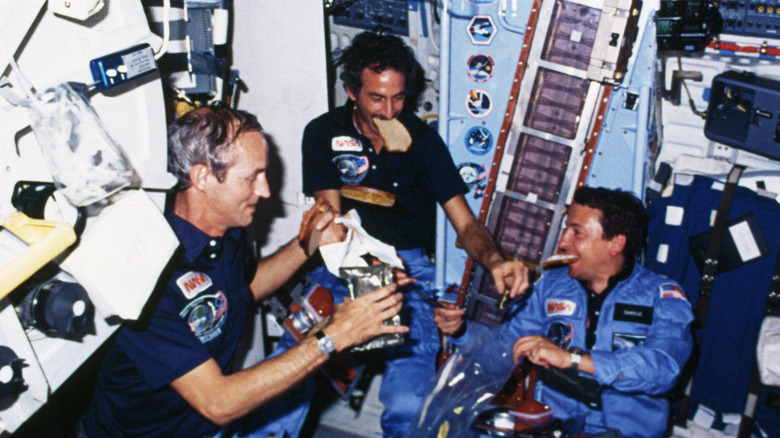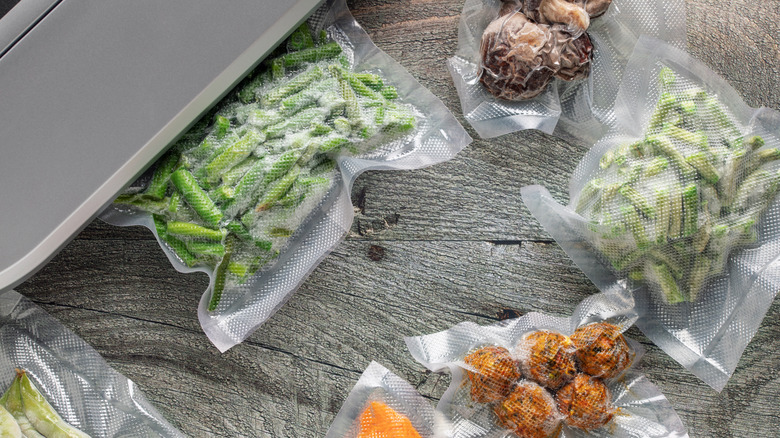The Rigorous Way Food Is Tested Before Being Served On The ISS
Mankind is still far from ever landing on Mars, but that doesn't stop scientists from exploring space daily. A big chunk of these space quests is being conducted on the International Space Station (ISS). Since a typical stay on the ISS lasts between six months and a year, you might be wondering how astronauts get the nourishment they need while living and working away from Earth. The answer lies in the meticulous process of food preparation before each mission, which determines which foods are essential for the space journey.
At NASA's Johnson Space Center (JSC) Space Food Systems Laboratory, food scientists develop the recipes before sending them to space. The process is very rigorous and involves multiple equipment, including freeze driers, convection ovens, steam kettles, standing mixers, canners, and vacuum sealers. While the main goal is to ensure that each meal can remain viable for as long as possible, the packed foods should also be palatable to the astronauts, whose taste buds may be affected by the lack of gravity.
Every time a recipe is developed, it goes through multiple rounds of testing. A sensory lab evaluates for flavor, and the astronauts themselves also get to taste and score each dish. Dietitians also have a role in planning out the menus based on the ratings to ensure that what the astronauts will eat at the ISS can support their nutritional and caloric needs throughout their months-long missions. The ISS crew members sample the menu again and make the final necessary changes. Once approved, it is prepared in a large batch, dehydrated, and packaged for storage.
Do astronauts get to eat their favorite foods in space?
There's a big difference between foods prepared for nourishment and those that tickle one's fancy. In the case of astronauts who work in a microgravity environment for extended periods, they are allowed to bring their favorite treats and snacks from home to help them overcome flavor fatigue. This might help explain how the breakfast staple, bacon, made it to the moon landing in 1969. And in case you didn't know, at least 12 bottles of Bordeaux wine spent a year aboard the ISS at one point, though that was more so for research purposes.
Astronauts are only allowed to bring off-the-shelf items, so fancy foods and drinks are usually off-limits. The selection is limited to snacks, such as cookies, candy, drinks, and certain dried goods. These are also repackaged into space-safe containers, so they may look very different from the colorful treats we find on store shelves. Nevertheless, the simple joy of having that familiar snack can help boost the morale of the astronauts as they endure their long missions in space.

